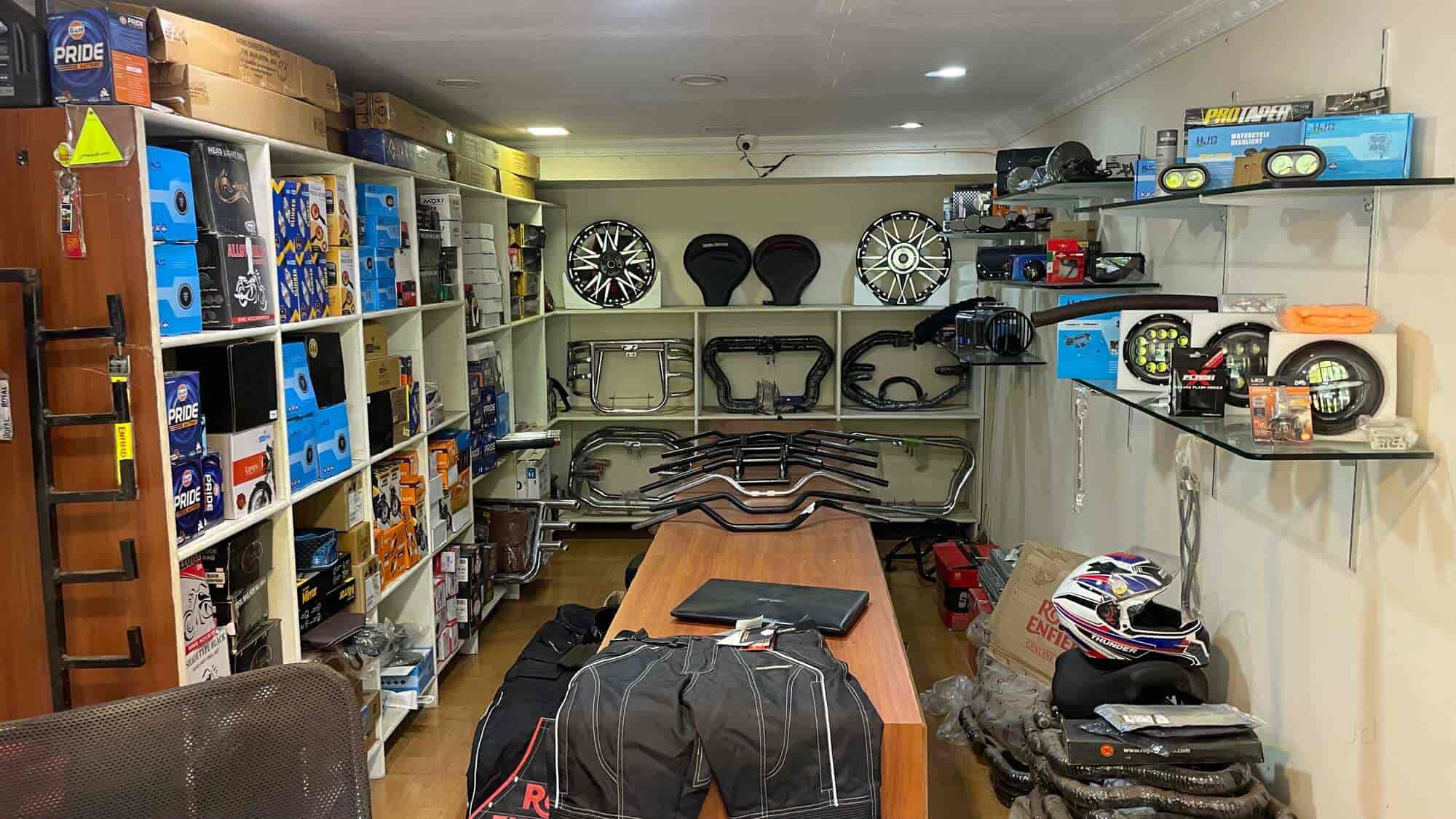Unleash Efficiency with Costs Motox Parts NZ Available Below
Unleash Efficiency with Costs Motox Parts NZ Available Below
Blog Article
Comprehending the Crucial Parts of a Motorcycle: A Comprehensive Guide for Enthusiasts
For motorcycle enthusiasts seeking to elevate their riding experience and ensure their bikes run efficiently, recognizing the important components of a bike is extremely important. Each aspect, from the engine's detailed workings to the vital function of the braking mechanisms, not just influences efficiency however also safety and security and comfort. This guide will walk through the basic components that every biker ought to be acquainted with, allowing educated options in both maintenance and prospective upgrades. As we begin this expedition, one must ask: exactly how does each element communicate to produce the smooth experience every enthusiast seeks?
Engine Parts

The camshaft plays a crucial role in controlling the timing of the engine's shutoffs, ensuring the specific opening and closing essential for reliable fuel and air intake, as well as exhaust expulsion. This timing is vital to preserving optimal engine efficiency and performance. In addition, the carburetor or gas shot system, depending on the bike design, is in charge of blending air with gas in the proper proportion for burning.
The air conditioning system, either air or liquid-based, functions to maintain the engine's temperature within operational restrictions, stopping overheating and making sure long life - moto parts nz. Each element, carefully developed and incorporated, adds to the smooth operation of the engine, specifying the motorcycle's power outcome and total performance
Transmission System
Indispensable to the motorbike's performance, the transmission system makes sure efficient power transfer from the engine to the wheels. This system makes up numerous essential components, including the clutch, transmission, and last drive, each playing an important duty in converting the engine's power right into movement. The clutch, usually operated by a hand bar, offers to involve and disengage the engine from the transmission, enabling smooth gear modifications and controlled acceleration.
The transmission, frequently described as the transmission appropriate, has a set of equipments that cyclists can manually change through to readjust the bike's rate and torque result. These gears are organized in a sequence that enables the bike to increase smoothly and preserve optimum engine efficiency across different speeds. Many motorbikes use a sequential transmission, requiring the motorcyclist to change gears in a predetermined order.
Braking Mechanisms
While recognizing the transmission system is crucial to taking advantage of a bike's power, just as important is the ability to manage and stop that power efficiently, which is where stopping systems enter into play. Brakes are crucial for safety and efficiency, giving the motorcyclist with the essential control to browse numerous terrains and conditions. Usually, bikes include 2 kinds of stopping systems: disc brakes and drum brakes.
Disc brakes are much more widespread in go to my blog modern-day motorcycles due to their superior efficiency. This system uses much better warmth dissipation, regular efficiency, and boosted quiting power, specifically in damp conditions.
Conversely, drum brakes, though much less usual, are still found in some bikes. They work by pressing brake shoes versus the inner surface of a drum affixed to the wheel. While generally less effective in warmth dissipation and quiting power, drum brakes are simpler and much more affordable.
Recognizing these stopping systems' nuances allows bikers to keep their motorbikes properly and value the design that makes certain risk-free and effective stopping.
Suspension and Steering
Suspension and guiding systems are essential parts that significantly influence a motorbike's handling and experience convenience. The suspension system, being composed of forks at the front and shock absorbers at the back, absorbs roadway irregularities, boosting stability and control. Front forks, usually telescopic or inverted, compress and rebound to mitigate influences, while rear shock absorbers preserve tire contact with the road, critical for traction and security.
Guiding, centered around the handlebars, connects the motorcyclist to the bike's directional control. The guiding head bearings make certain smooth procedure, allowing precise maneuverability. Correct alignment and maintenance of these bearings are important for foreseeable steering feedback and lowering biker exhaustion.
The suspension's adjustability is an additional critical element; preload, damping, and rebound setups allow customization to suit different riding problems and styles. This versatility is vital for enhancing performance, whether browsing city roads or dealing with sturdy tracks. Technologies like electronic suspension systems offer real-time changes, improving trip high quality across diverse surfaces.

Electrical Solutions
After ensuring a smooth and controlled ride motorcycle helmets via effective suspension and guiding systems, focus transforms to the electrical systems, a critical element of modern motorbikes. These systems play an essential duty not just in starting the engine yet also in powering various parts that enhance the performance and security of the motorcycle.
At the heart of a bike's electric system is the battery, which shops electric energy needed for starting the engine and powering auxiliary systems - moto parts nz. The alternator or generator, paired with the rectifier-regulator, guarantees the battery stays charged while the motorcycle is in operation, converting power right into electrical energy and preserving voltage levels
The ignition system, one more essential part, is in charge of igniting the air-fuel mixture in the engine's cylinders. Modern motorbikes usually make use of an electronic ignition system, providing higher performance and integrity compared to standard systems.
Illumination systems, including headlights, tail lights, and indications, are additionally crucial, ensuring visibility and safety and security for the motorcyclist. Extra electronic parts such as sensors, control devices, and shows add to advanced functions like gas shot administration, anti-lock stopping systems (ABS), and electronic control panels, additionally boosting the riding experience.
Conclusion
A detailed understanding of a motorcycle's necessary components, consisting of the engine, transmission system, braking devices, suspension, steering, and electrical systems, is crucial for enthusiasts intending to optimize efficiency, comfort, and safety. Mastery of these aspects enables educated choices relating to upkeep and upgrades, inevitably improving the riding experience. By incorporating this understanding, bikers can ensure their bikes operate at peak effectiveness and reliability, thereby optimizing both enjoyment and durability of their lorries.
For motorcycle lovers looking to raise their riding experience and ensure their bikes run efficiently, recognizing the crucial parts of a motorcycle is extremely important.Indispensable to the motorbike's functionality, the transmission system guarantees efficient power transfer from the engine to the wheels.While understanding the transmission system is crucial to taking advantage of a bike's power, similarly important is the ability to regulate and quit that power successfully, which is where braking systems come into play. Commonly, motorbikes feature try these out 2 kinds of stopping systems: disc brakes and drum brakes.
A complete comprehension of a motorbike's essential parts, consisting of the engine, transmission system, stopping devices, suspension, steering, and electrical systems, is indispensable for lovers intending to optimize comfort, security, and efficiency.
Report this page